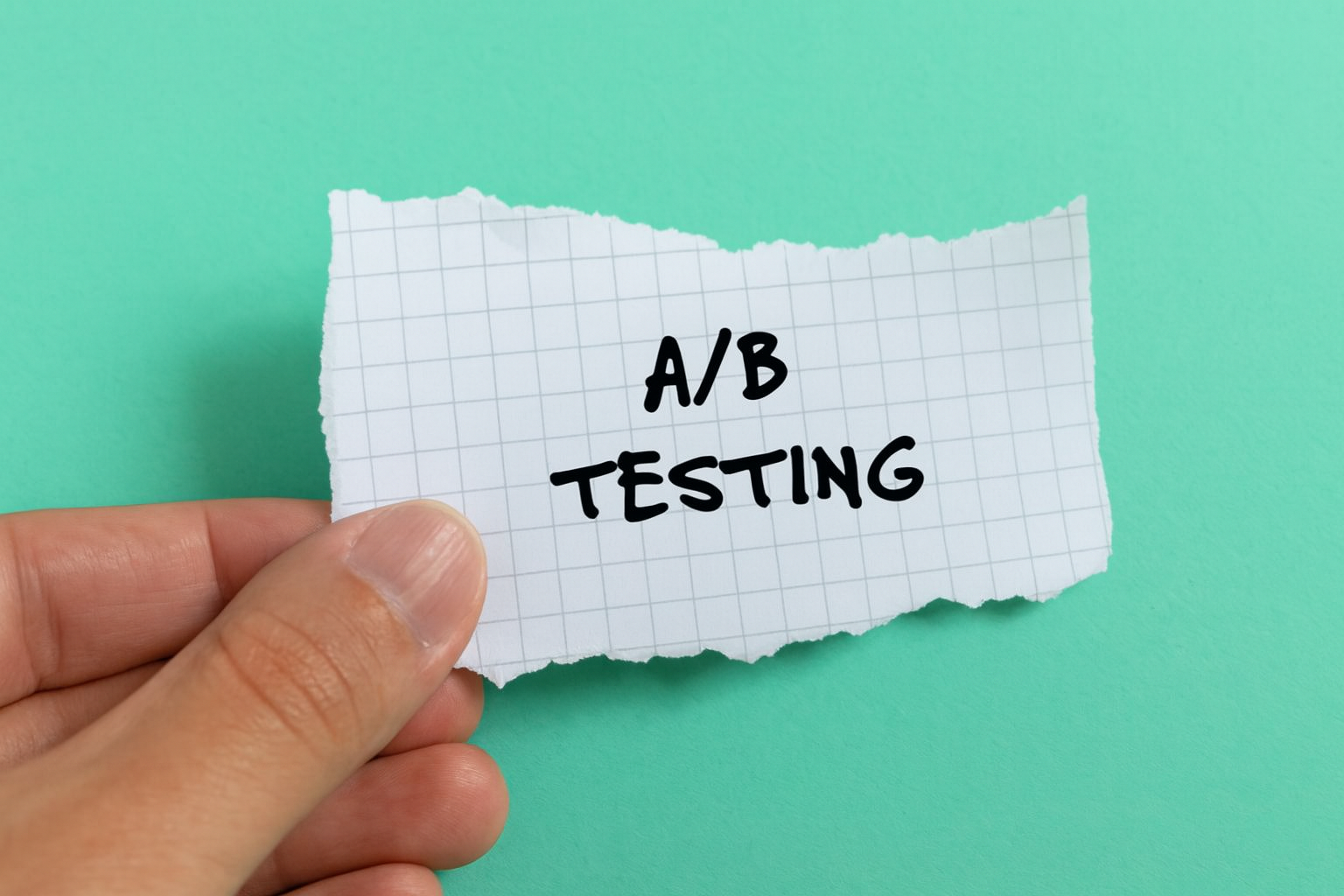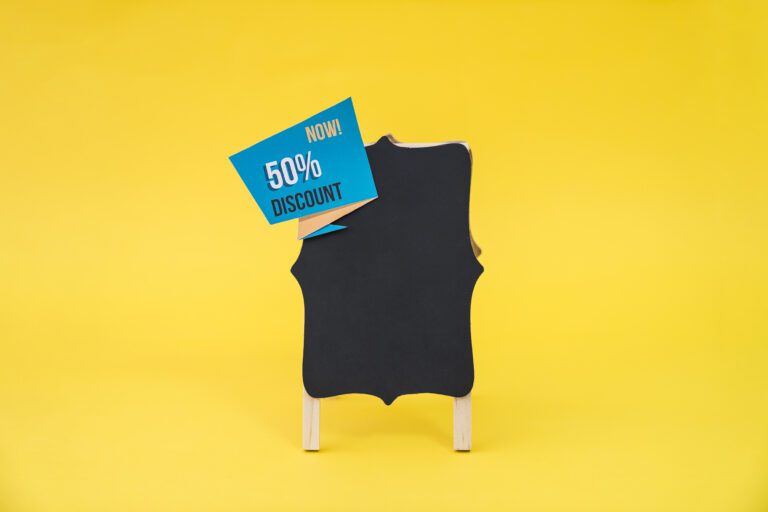How to Do A/B Test for Popup

I hope you enjoy this blog post. If you want Hello Bar to grow your leads, click here.
Author:
Mansi
Published
September 11, 2025

Table of Contents
Popups either work really well, or they flop. There’s rarely an in-between. You’ve probably seen it yourself—sometimes a popup brings in tons of emails or sales, and other times people just close it without a second look.
The thing is, there’s no universal “best popup.” What works on one site won’t necessarily work on another. The only way to figure out what actually works for your visitors is to A/B test for popup versions instead of guessing.
That’s all this comes down to: test two versions, see which one gets the better response, keep the winner, and then test again. Nothing fancy.
What an A/B Test for Popup Really Is
An A/B test for popup is just running an experiment. Half your visitors see one version (A), the other half see a slightly different version (B). Then you compare.
It could be as small as changing a button from “Sign up” to “Get started.” Or it could be testing two totally different offers—say, 10% off vs free shipping.
Whichever one pulls in more conversions, that’s your winner. That’s all an A/B test popup is.
Why You Shouldn’t Just Guess
It’s easy to think you already know what will work. You might believe discounts always beat free shipping, or that big bold headlines are always better. But those are just assumptions.
I’ve seen popups where the “boring” version outperformed the flashy one by 20%. I’ve seen “Get 10% off” lose to “Free shipping” in one store, but win in another.
If you don’t A/B test popup ideas, you’ll just be building everything on guesses. And guesses usually cost money.
Step 1: Decide on One Goal
Before you even start, be clear about what you’re testing for. If you just say “I want better popups,” you won’t know what success looks like.
- If the goal is emails, then conversions = signups.
- If the goal is sales, measure actual purchases.
- If the goal is saving abandoned carts, track recovered carts.
Your whole A/B test for popup setup depends on picking one clear goal.
Step 2: Change One Thing at a Time
Don’t make the rookie mistake of changing five things at once. If you change the headline, the button, the background color, and the offer all in the same test, you won’t know what caused the result.
Pick one variable. Just one.
Examples:
- Headline text
- Button copy
- When the popup shows (on scroll vs exit intent)
- Offer type (discount vs free shipping)
- With image vs text-only
That’s how you run a clean A/B test popup.
Step 3: Build Your Two Versions
Now put together version A and version B. Keep them the same except for the one variable you’re testing.
Say you want to test the headline.
- Version A: “Sign up to get 10% off your first order.”
- Version B: “Join now and save 10% on your first purchase.”
Same deal, just different wording. That way, if one wins, you know it’s the headline that made the difference.
That’s the kind of control you need in an A/B test for popup.
Step 4: Split Your Traffic Evenly
A real A/B test popup means you need both versions running at the same time, split evenly. Half the people see A, half see B.
Don’t do “this week A, next week B.” Traffic changes by day, week, even season. That will mess with your data.
Use a popup tool that randomizes and splits traffic automatically. That way you’re actually testing fairly.
Step 5: Know What Counts as Success
You need to decide up front what a “win” means. Otherwise, you’ll end up staring at numbers with no idea what matters.
If the goal is signups, then the win condition is a higher conversion rate.
If the goal is sales, track revenue from those who interacted with the popup.
If the goal is cart recovery, look at how many people actually completed checkout.
Don’t chase every number at once. Pick the metric that matches your goal and stick with it for that test.
That’s how an A/B test for popup stays useful.
Step 6: Give It Enough Time

This is the part people hate—waiting.
If you run an A/B test popup for just two days, the results mean nothing. You’ll just get random noise.
- If you’ve got high traffic, a week or two might be enough.
- If your traffic is light, you might need a month or more.
There’s no magic number. The key is: don’t stop early just because version B looked good after 30 clicks. That’s not testing.
Step 7: Check the Quality of Results
Sometimes the “winning” popup isn’t actually the best one.
Example: version A might bring in more signups, but those signups never buy anything. Version B might bring fewer signups, but they actually convert into paying customers.
That’s why you can’t just look at surface numbers. An A/B test popup is about finding what helps your real goal, not just what makes the graph look nice.
Step 8: Use What You Learn, Then Test Again
Don’t stop after one test. The best sites are always testing.
You might start by testing your offer. Then move on to timing. Then headline. Then button text.
Each A/B test popup builds on the last, and you keep stacking small wins until your popups are actually tuned for your audience.
That’s the point: constant improvement.
What You Can Actually Test in Popups
Here’s a list of things that usually make sense to test one by one:
- Timing: do they respond better after 5 seconds, or only on exit intent?
- Design: plain text vs image-heavy.
- Copy: “Subscribe now” vs “Join the list.”
- Incentives: 10% off vs free shipping.
- Button text: “Shop now” vs “Claim offer.”
Each of these can shift results, and an A/B test for popup lets you find out without guessing.
Example of a Real Test
Let’s say you run an online shoe store.
You test two popups:
- Version A: “Get 10% off your first order when you subscribe.”
- Version B: “Free shipping on your first order when you subscribe.”
You run the A/B test popup for 30 days. A got more signups, but B’s signups bought more shoes.
So even though A “won” on raw numbers, B was actually better for your business.
That’s the kind of insight you only get from an A/B test for popup.
Also read our article on Best A/B Testing Practices You Need to Know to Increase Conversions
Common Mistakes to Avoid
- Testing too many things at once.
- Stopping after a couple of days.
- Not having a clear goal.
- Judging only by raw numbers.
- Treating one test as “final” and never testing again.
If you avoid these, your A/B test popup results will actually mean something.
When Testing Isn’t Worth It
If your site barely gets traffic, you won’t have enough data. An A/B test for popup only works when there’s enough volume to show real patterns.
In that case, focus first on getting more visitors. Testing can come later.
The Real Value
The truth is, there isn’t one “perfect” popup setup. What works for your site won’t be identical to anyone else’s.
But if you keep running an A/B test for popup over time, you’ll gradually shape popups that fit your audience. Not theory, not guesses—actual proof.
That’s how you get popups that don’t just show up, but actually work.
Conclusion
Don’t assume. Don’t guess. If you want popups that pull their weight, run the tests. Numbers will tell you what works if you give them the chance.






